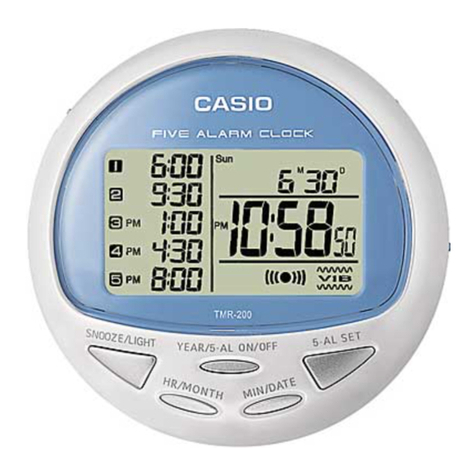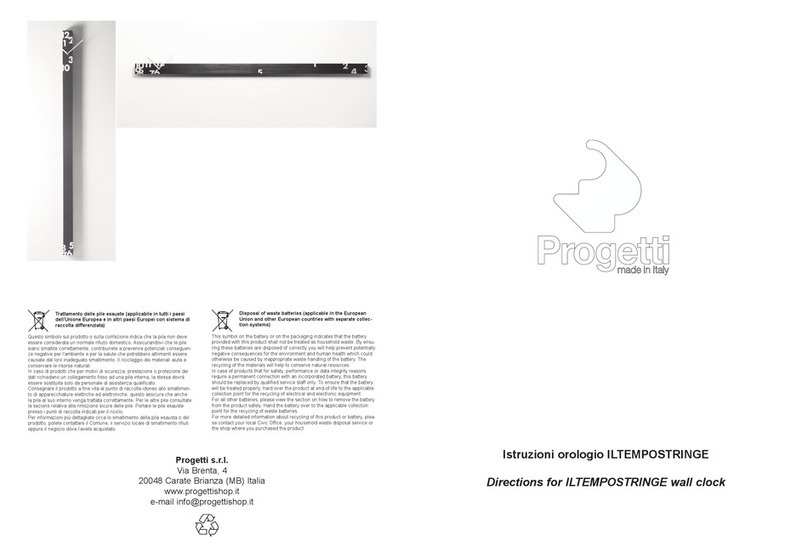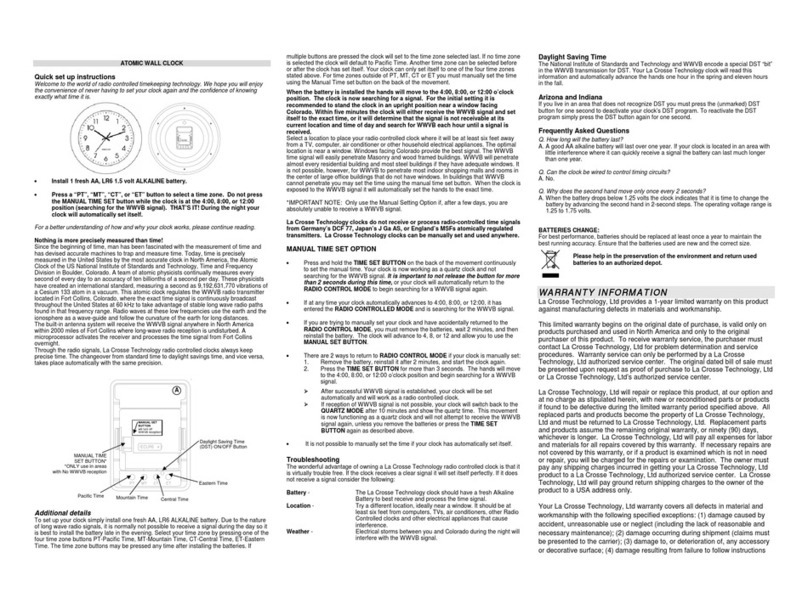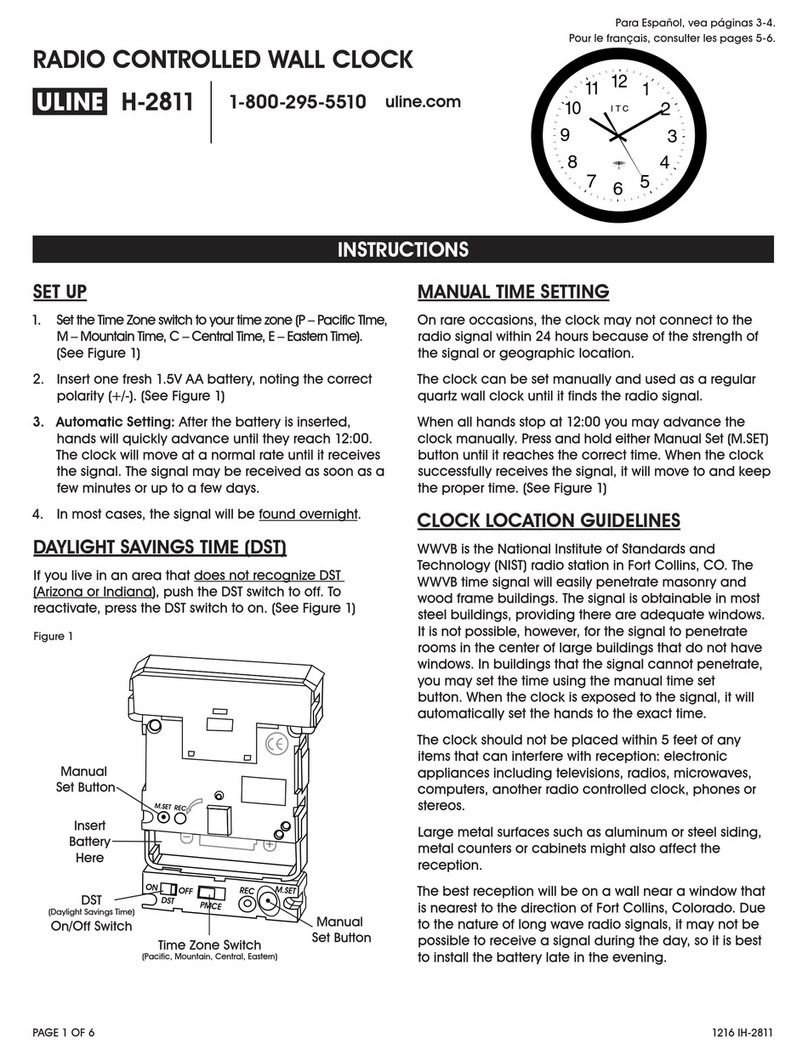Jaeger-leCoultre CLASSIC MOON User manual

ENGLISH
Table of contents
Introduction 25
A virtually perpetual movement 25
Atmos®, the clock that lives on air 28
An approximately 4,000-year lunar calendar 29
Precautions for the operation and transport of 30
transport of the Atmos® Classique Phases de Lune
Precautions for use 31
Using and setting the clock 34
International Guarantee 43
Limited Warranty 47
(United States of America and Canada)
Guarantee for Australia 50
Jaeger-LeCoultre Customer Service 53

24
*
The Elinvar brand does not belong to Jaeger-LeCoultre.
10
9
2
1
11
3
6
4
7
5
8
1Expansion chamber
2Brass cover
3Balance spring (counterweight)
4Small chain
5Mainspring
6Pulley
7Return spring
8Balance wheel
9Elinvar®*wire
10 Escapement
11 Winding spring

25
Introduction
We would like to thank you for the confidence
you have placed in Jaeger-LeCoultre. Our Mai-
son has applied all its expertise and passion to
the creation of this model.
We invite you to consult the operating instruc-
tions and hope your Jaeger-LeCoultre clock
brings you great enjoyment.
A virtually perpetual movement
Leonardo da Vinci had already demonstrated
that perpetual motion was not feasible due to
the laws of physics. But it would have taken
more than that to discourage dogged research-
ers. The latter included the Neuchâtel engineer
Jean-Léon Reutter, who, in 1928, designed a
completely revolutionary clock drawing its
power from variations in the ambient tempera-
ture. It took a few more years of research by our
Manufacture to transpose this idea into techni-
cal reality and patent it. The result could easi-
ly be mistaken for a perpetual movement: the
Atmos® clock was born. The principle is amaz-
ENGLISH

26
ingly simple. In a hermetically closed capsule
is a gaseous mixture which expands when the
temperature rises and contracts when it falls.
Connected to the clock’s drive spring, the cap-
sule swells like the bellows of an accordion,
constantly winding up the clock movement.
Between 15 and 30 degrees Celsius, a tempera-
ture fluctuation of a single degree is enough to
provide the clock with an operating autonomy
of about two days. The Atmos® clock is de-
signed so that there is no excessive resistance
opposing this minimum power. The Atmos®
balance wheel oscillates slowly, its lung breath-
ing in perfect harmony with temperature vari-
ations and its heart beating quietly twice a
minute, i.e. 60 times less quickly than that of
a traditional clock, 240 times less quickly than
a wristwatch movement, and 1,966,000 times
less quickly than a quartz watch movement.
To get an idea of the delicacy of this minute
energy transfer, consider the fact that 60 mil-
lion Atmos® clocks together would consume no
more energy than a weak 15-watt electric light
bulb. All the components of the Atmos® clock

27
are amazingly accurate and dependable; hence
it has virtually wear-free operation. It is there-
fore distinguished by its long service life which
– theoretically – can be as long as 600 years.
Because of the current state of air pollution,
however, regular checks and services are rec-
ommended. The Atmos® clock is perfect both
for lovers of technical precision and for those
who consider sober lines and accomplished
craftsmanship to be paramount. In this respect,
nothing has changed, especially considering
that all Atmos® clocks are subject to five weeks
of checks and fine adjustments which complete
the work of Jaeger-LeCoultre’s master clock-
makers. A unique gem of horological technology,
the Atmos® clock is a timekeeper of distinction
for Heads of State and numerous sovereigns,
because in Switzerland, a country unique in the
world for the perfection of its watches, it is a
tradition to oer guests of honour this Swiss
horological masterpiece. This has been so for de-
cades now, and the eminent recipients include
John F. Kennedy, Winston Churchill, General
Charles de Gaulle and Charlie Chaplin.
ENGLISH

28
Atmos®, the clock that lives on air
Temperature variations are its source of power.
Its balance wheel will oscillate as long as the
sun shines.
Rises in temperature expand the gaseous mix-
ture trapped in the expansion chamber, which
in turn compresses the winding spring. In the
event of a fall in temperature, the reverse oc-
curs. The gas contracts and the spring relax-
es. This imperceptible back-and-forth motion is
sucient to wind the Atmos® clock.
No battery, no electrical power, no winding.
Accurate and silent.

29
An approximately 4,000-year lunar calendar
Living in pace with the rotational movements
of the earth, the moon and the cosmos, no oth-
er instrument for measuring time was more
suited to reflecting with the greatest accuracy
the lunar circle in the firmament. This function
adorns certain Atmos® clocks.
A conventional quartz clock with moon phase
indication stays thoroughly accurate for two or
three years. The most highly perfected mechan-
ical watches, a field in which Jaeger-LeCoultre
excels, deviate by one day in 122 years; the
Atmos® clock, for its part, is designed to dis-
play the moon phases with exceptional accura-
cy for more than 4,000 years.
On the Atmos® clock, the moon phases are indi-
cated according to the real phases of the lunar
month, called the synodic period, corresponding
to the time elapsing between two full moons. For
the moon seen from the earth to have the same
position relative to the sun, it will have to travel
a further distance on its orbit. As a result, the
lunar month lasts slightly longer than the side-
ENGLISH

30
real period, i.e. on average 29 days, 12 hours,
44 minutes and 2.8 seconds (or 29.530588
days). Now, the mechanism of your Atmos®
clock is so precise that it completes its travel
in 29.530568 days, resulting in a tiny dierence
for each lunation which will amount to one day
in 3,821 years.
Precautions for the operation and
transport of the Atmos®Classique
Phases de Lune
The Atmos® clock is a very high-precision instru-
ment manufactured with technologies which
only the Jaeger-LeCoultre master-clockmak-
ers are capable of handling. The power need-
ed for this clock to operate is extremely low,
which means that your Atmos® clock must be
placed on a completely stable horizontal sur-
face (chest of drawers, console, etc.) to ensure
optimum operating conditions. Once started,
the clock should not be moved: cleaning the
cabinet or the base should be carried out with-
out handling or moving the clock.

31
Important: For transport, use the complete
original packaging. If necessary, ask our deal-
er to replace the necessary parts.
Precautions for use
LOCKING AND UNLOCKING
THE BALANCE WHEEL
The Atmos® clock balance wheel, which is sus-
pended from an extremely fine wire, must be
locked before any transportation, even for
small moves within an apartment, as well as
for setting the time.
The Atmos® Classique Phases de Lune clock
has two balance wheel locking systems:
-The first, accessible under the cabinet, should
be used for transport.
-The second, accessible after opening the door,
is used when the clock is moved a short dis-
tance within an apartment.
1. To unlock the balance wheel before proceed-
ing to set the time on an Atmos® clock:
In order to use your Atmos® clock, you first
need to unlock the balance wheel by means of
ENGLISH

32
the first locking system. To do this, gently tip
your Atmos® clock over so as to gain access to
the underside of the clock’s base. Unscrew the
screw in its centre as far as it can turn.
The second system, consisting of a
locking le-
ver, should be released only after setting
the time
(see section on Setting the Time).
2. To lock the balance wheel before transporting
your Atmos® clock:
It is first essential to lock the balance wheel us-
ing the locking lever located at the front of the
clock, just above the balance wheel itself. This
locking procedure must be carried out when
the balance wheel comes to a stop, before os-
cillating back in the opposite direction. To do
this, push the lever to the right up to the thrust
stop.
Table of contents
Popular Clock manuals by other brands
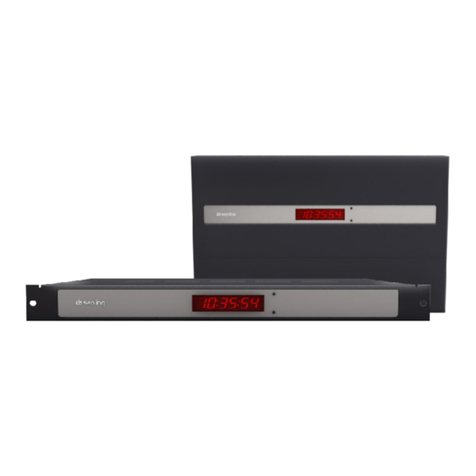
Sapling
Sapling NTP 7000 Series installation manual
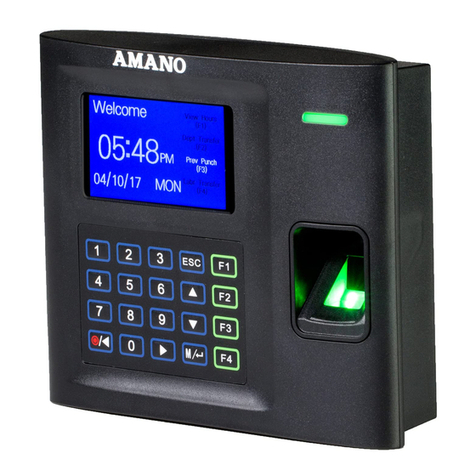
Amano
Amano MTX-30F Installation & operation guide

La Crosse Technology
La Crosse Technology BBB86118v3 Setup guide

BEARWARE
BEARWARE 304474 manual
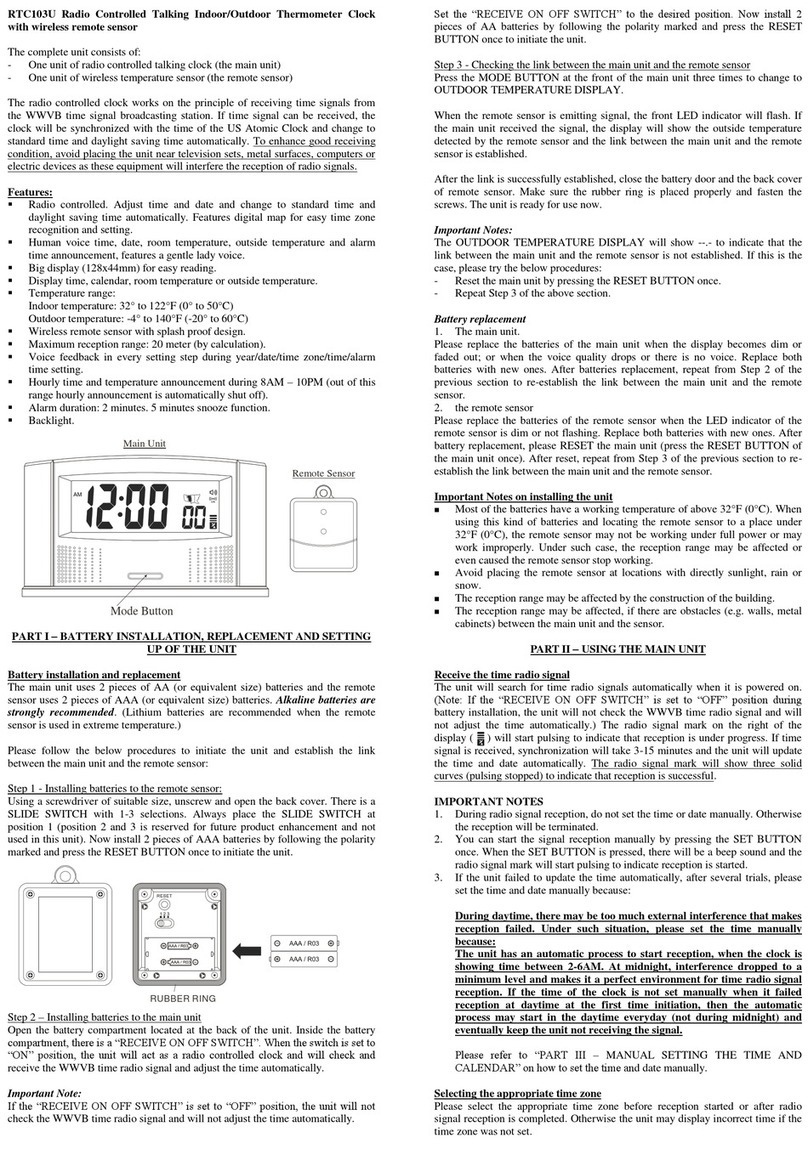
LS & S
LS & S RTC103U instruction manual
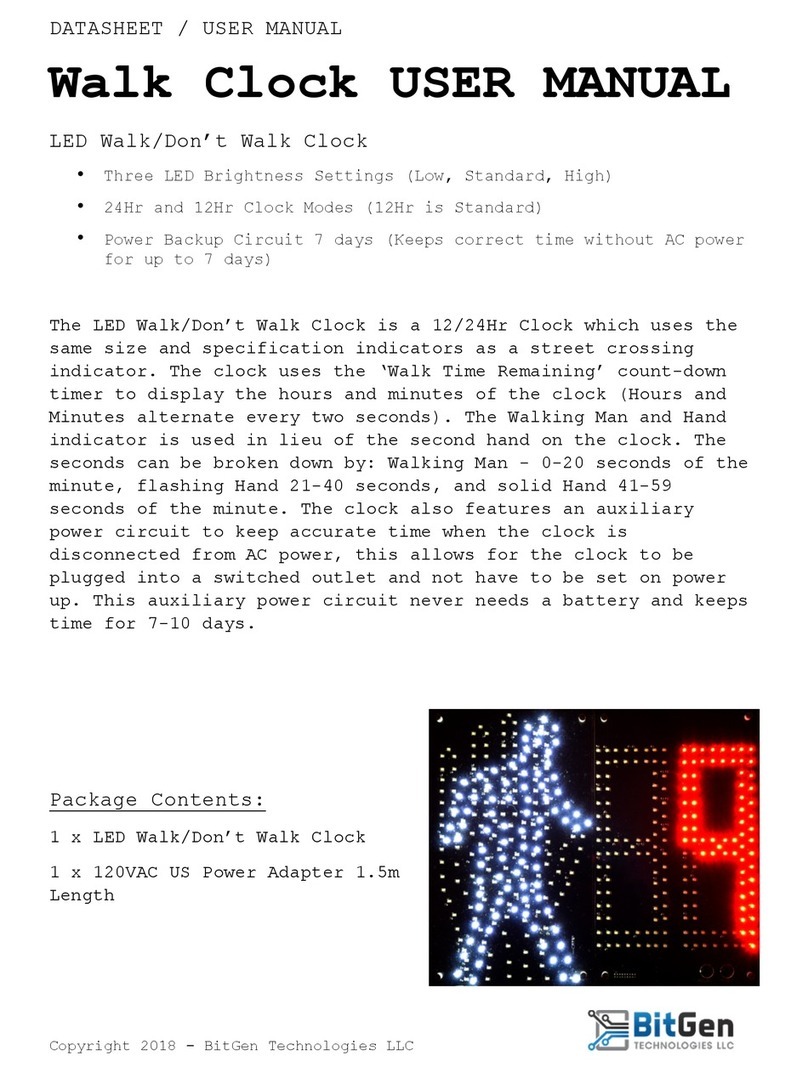
BitGen Technologies
BitGen Technologies LED Walk/Don't Walk Clock user manual
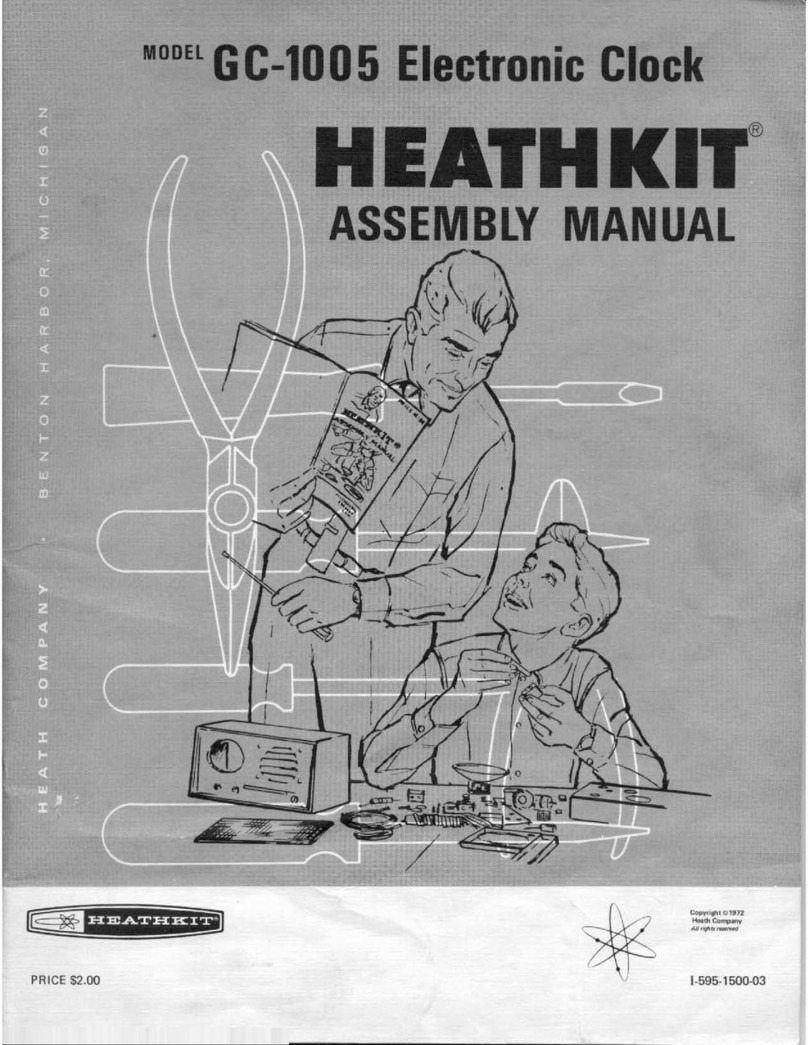
Heathkit
Heathkit GC-1005 Assembly manual
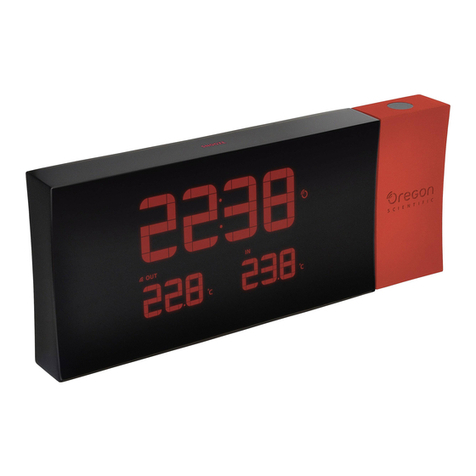
Oregon Scientific
Oregon Scientific PRYSMA RMR221P manual
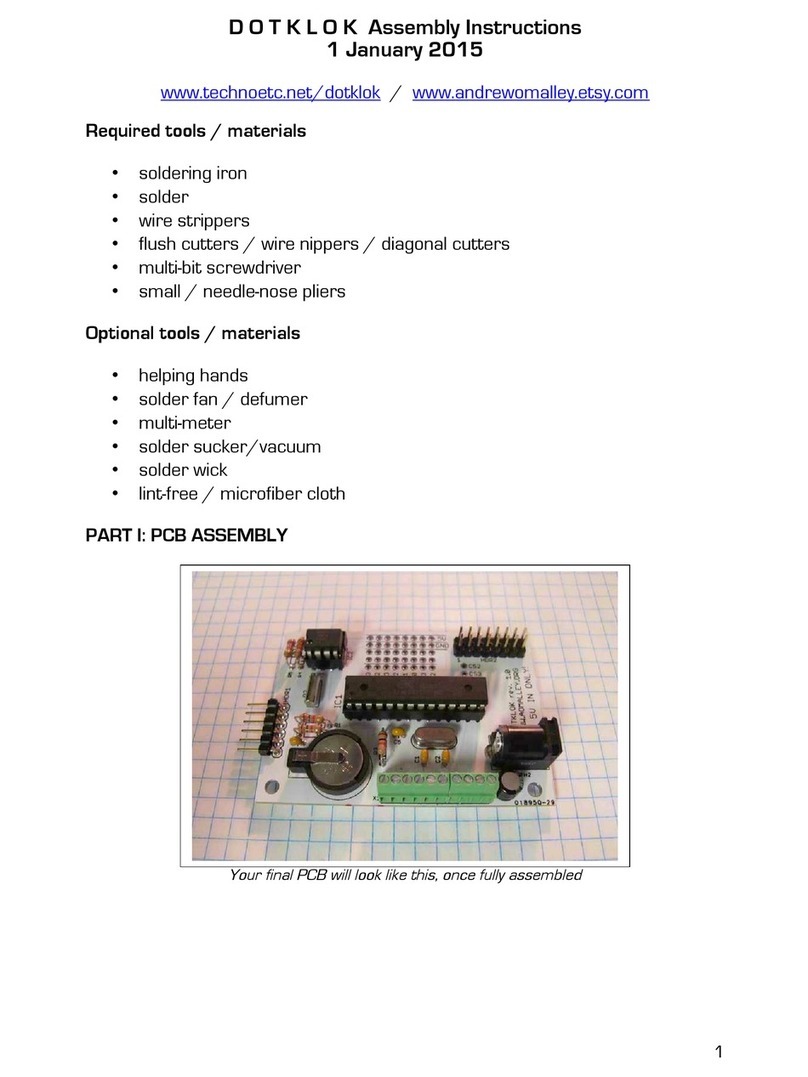
Andrew O'Malley
Andrew O'Malley DOTKLOK Assembly instructions

Nixie Clock
Nixie Clock Divergence Meter user manual
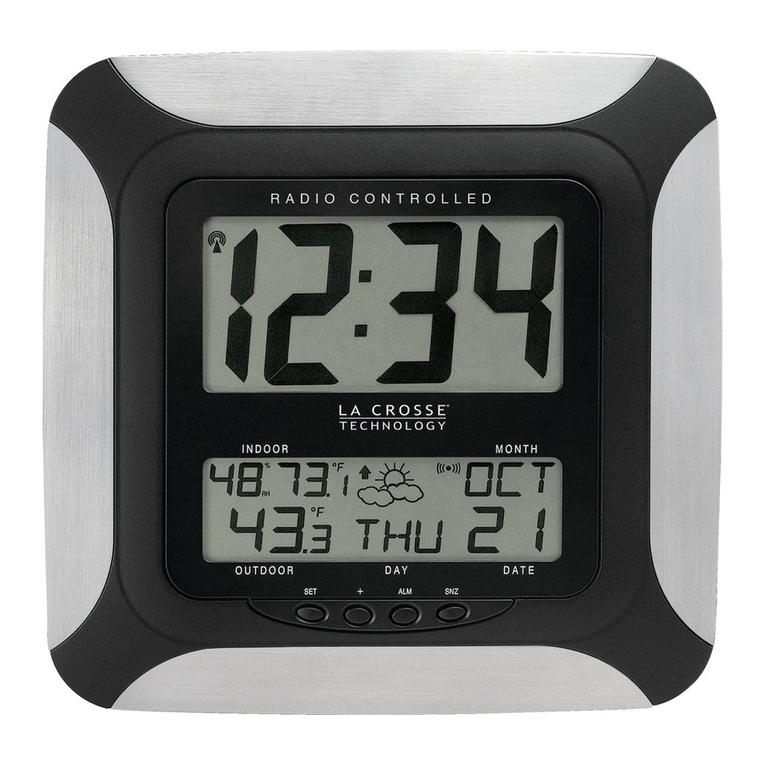
La Crosse Technology
La Crosse Technology WS-8256-AL user manual
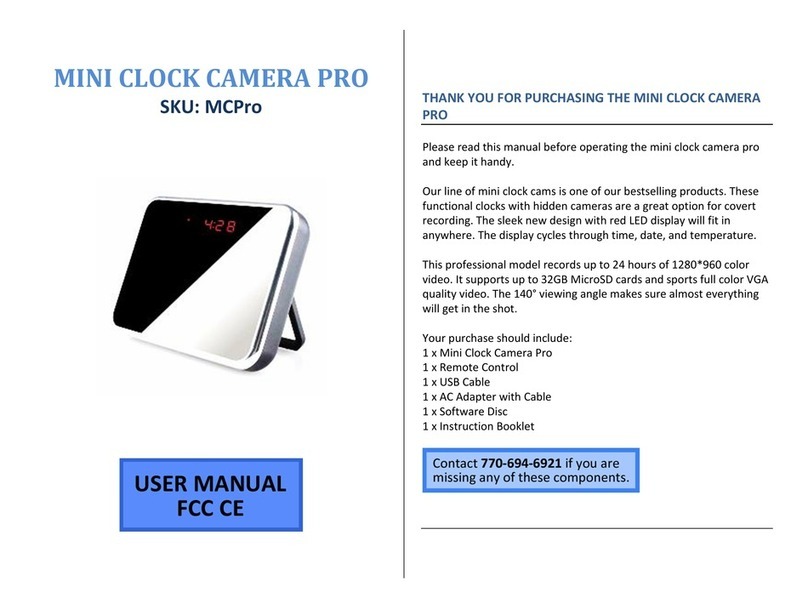
Mini Gadgets
Mini Gadgets MCPro user manual
